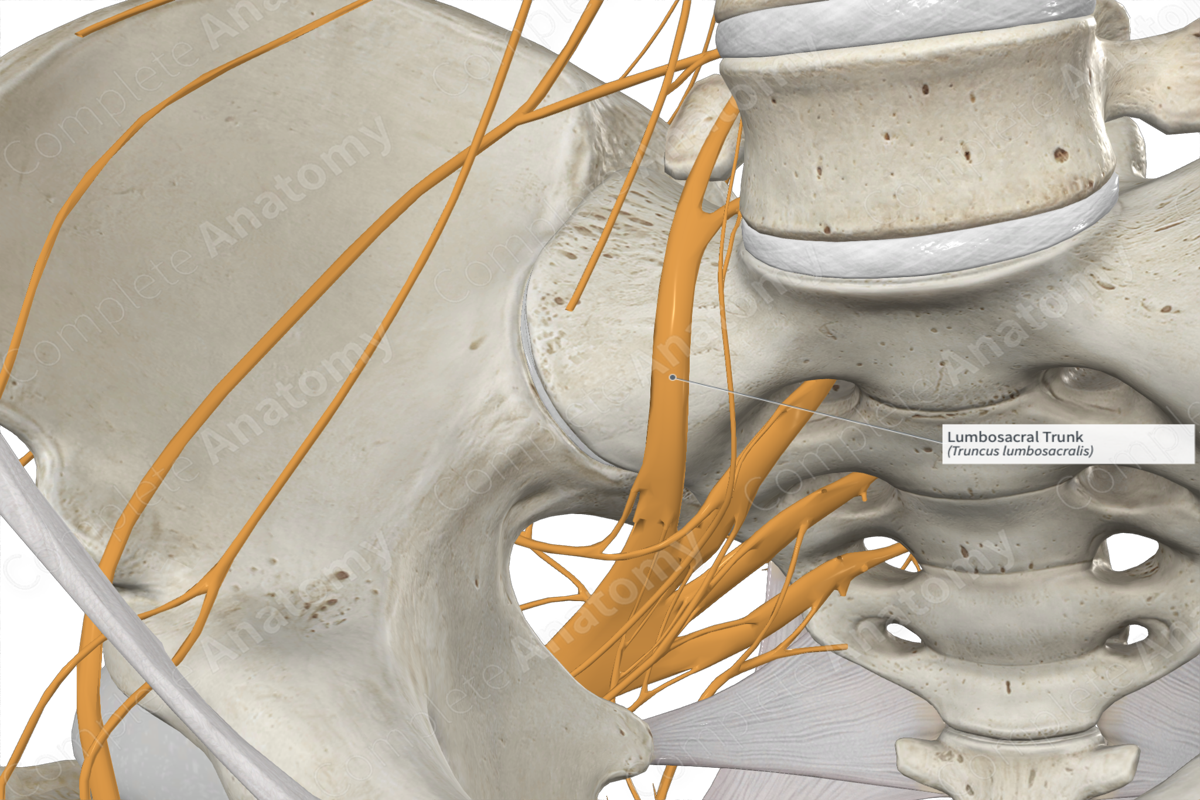
Quick Facts
Origin: Anterior rami of the fourth and fifth lumbar nerves (L4-L5).
Course: Combines with sacral nerves to form the sacral plexus.
Branches: Contributes to the sacral plexus.
Supply: Sensory innervation to the leg and motor innervation to gluteal muscles. Motor innervation to the muscles of the lateral and anterior compartments of the leg and muscles of the foot.
Origin
The union of the anterior rami of the fourth and fifth lumbar nerves.
Course
Runs inferiorly, medial to psoas major, anterior to iliacus, and posterior to the left or right iliac artery and vein. It combines with fibers from the first sacral nerve to join the sacral plexus. This trunk connects lumbar and sacral nerve together.
Branches
There are no true branches of the lumbosacral trunk. However, the lumbosacral trunk does give rise to the superior gluteal, inferior gluteal, and sciatic nerves. The lumbosacral trunk helps to form the portion of the sciatic nerve that gives rise to the common fibular nerve.
Supplied Structures
The lumbosacral trunk supplies sensory cutaneous innervation to the posterior and lateral leg. It sends motor impulses to gluteus maximus, gluteus minimus, gluteus medius, and tensor fasciae latae muscles. Fibular branches innervate peroneus longus and brevis, tibialis anterior, extensor hallucis longus, extensor digitorum longus, peroneus tertius, extensor digitorum brevis, and extensor hallucis brevis muscles.
List of Clinical Correlates
—Foot drop
Learn more about this topic from other Elsevier products





